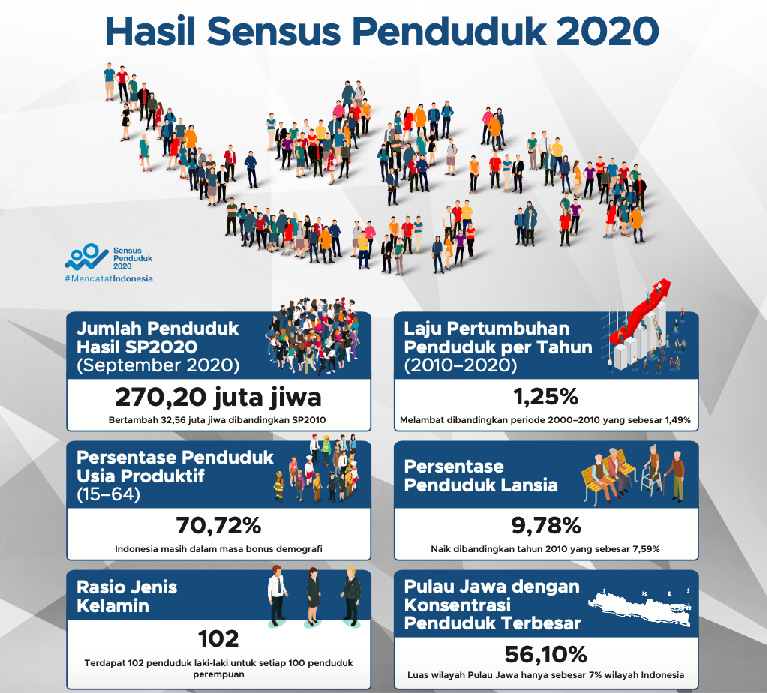Statistics Indonesia Releases 2020 Census Results

Image Source: bps.go.id
Statistics Indonesia (BPS) has released results of the 2020 census, stating that the population of Indonesia in September 2020 stands at 270.2 million with the population density of 141 people per square kilometer.
“The population growth rate in Indonesia has shown a downward trend. One of the reasons is the Government’s policy to reduce the rate through the family planning program launched in 1980,” Head of the BPS Suhariyanto said, Thursday (21/01).
For the record, the BPS data shows that during 2010-2020 the average growth rate of Indonesia’s population was 1.25 percent per year, influenced by factors of birth, death and migration.
Based on the distribution per island, Indonesia’s population is still concentrated on the island of Java. With an area of about 7 percent of the total area of Indonesia, the island of Java is inhabited by 151.6 million people or 56.10 percent of the Indonesian population, followed by Sumatra (21.68 percent), Sulawesi (7.36 percent), Kalimantan (6.15 percent), Bali-Nusa Tenggara (5.54 percent), and Maluku-Papua (3.17 percent).
Regarding gender proportion, the total male population was 136.66 million or 50.58 percent and the female population was 133.54 million or 49.42 percent.
“In 2020, sex ratio of Indonesia’s population is 102, meaning there are 102 men for every 100 women,” he said.
Based on age groups, the results of the 2020 census show that the majority of Indonesia’s population (70.72 percent) is in the productive age group (15-64 years).
“In 2020 we can see that the young age group (0-14 years) continues to decline due to decrease in births. On the other hand, the productive age group has increased from 53.39 percent in 1971 to 70.72 percent in 2020,” Suhariyanto said.
Suhariyanto added that the proportion of the population over 65 years of age has also increased from 2.49 percent in 1971 to 5.95 percent in 2020.
“The increase in the percentage of the elderly population can be interpreted as a result of improved public health, higher quality of nutrition, and improved lifestyle,” he explained.
He also stated that the Indonesian population is dominated by Generation Z and Millennial Generation with the proportions of 27.94 percent and 25.87 percent respectively.
Suhariyanto further said that the BPS and Ministry of Home Affairs will continue to work hand in hand to improve data on Indonesia’s population.
“I do hope that the results of the joint release between the BPS and Ministry of Home Affairs can be used by all parties for various purposes. Let us continue to join hands and collaborate to improve population data for an advanced Indonesia,” he concluded. (UN) (RI/EP)








